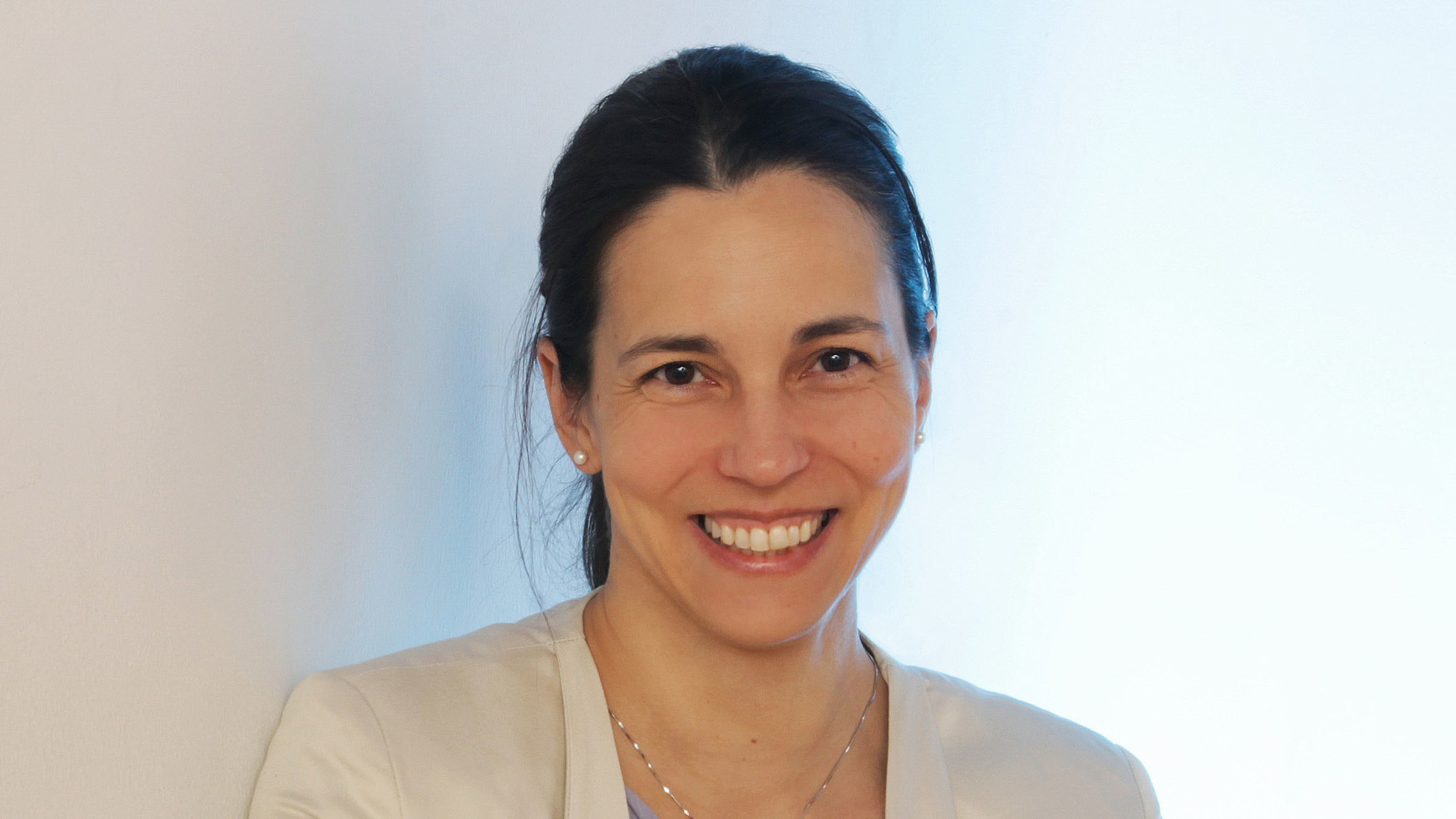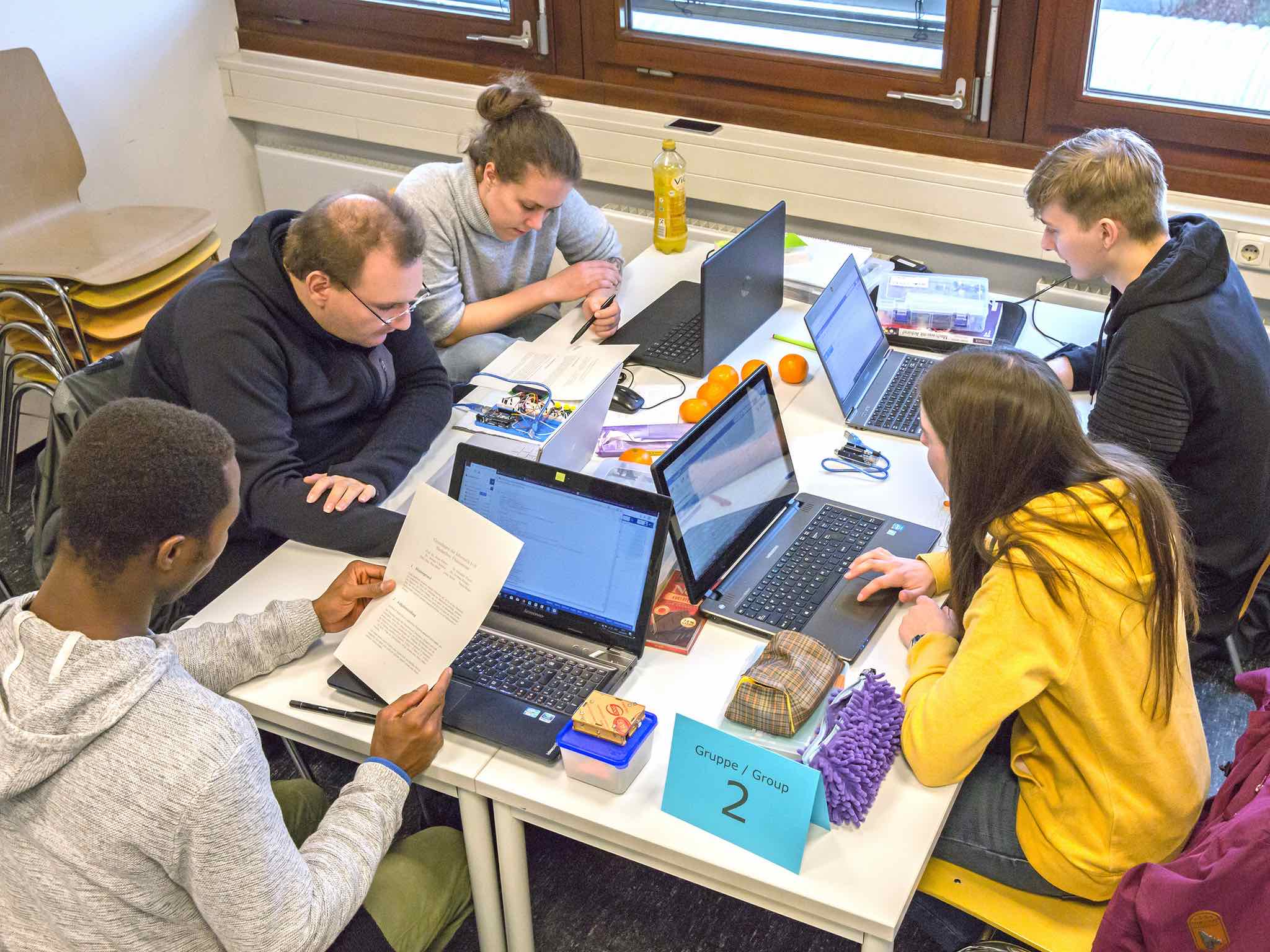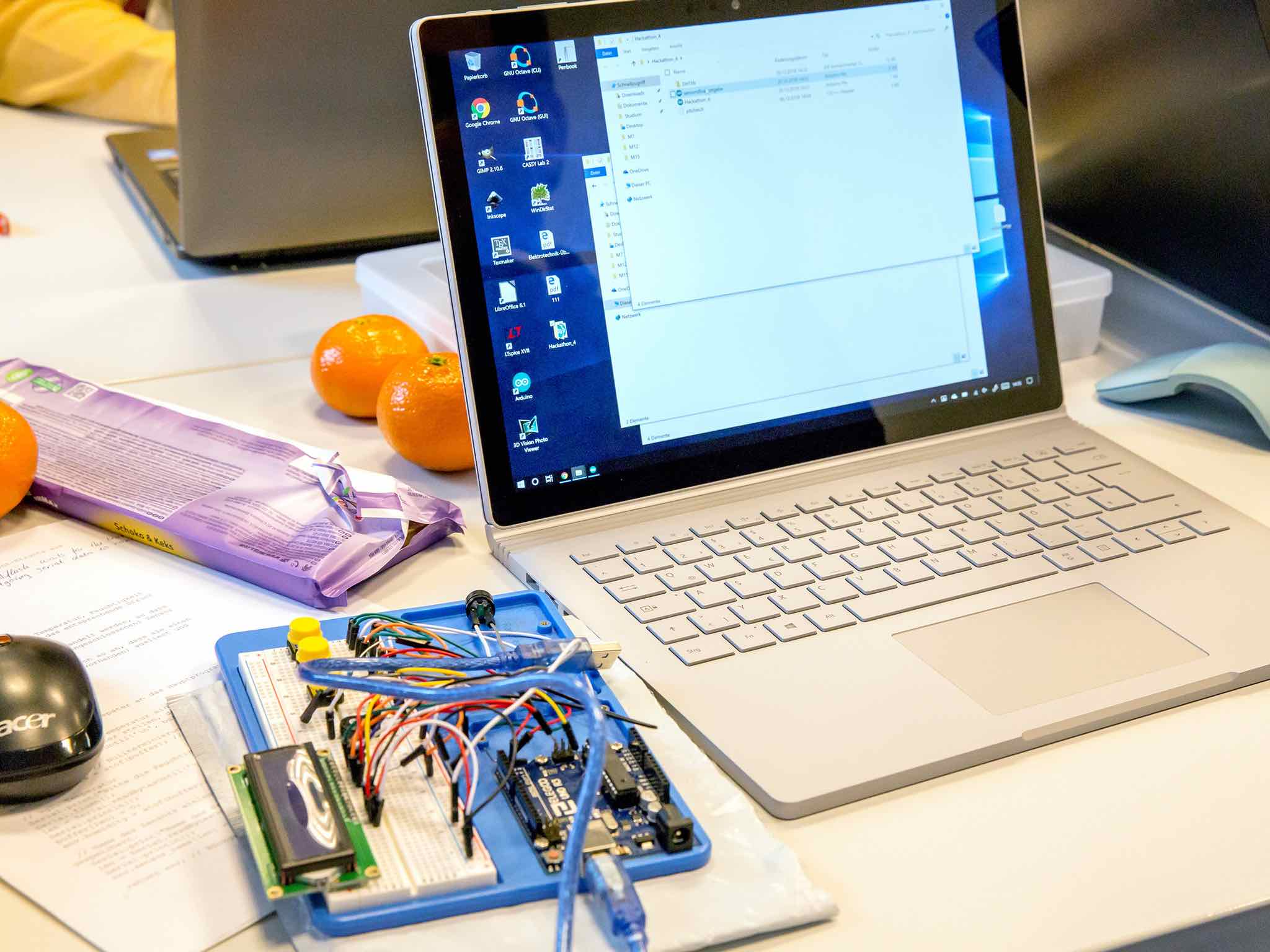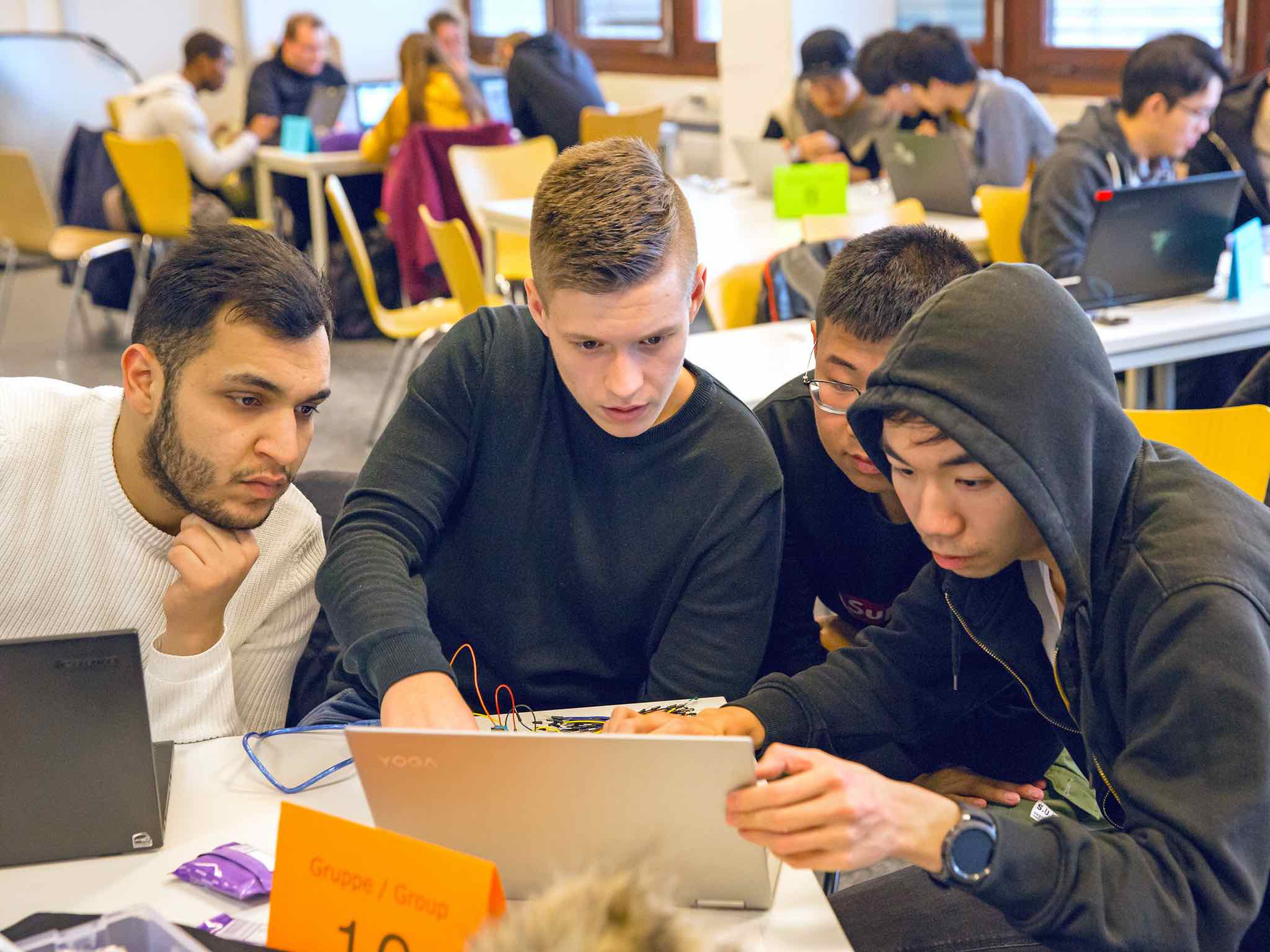
Bite-Sized Lectures to Take Away
One lecturer is putting an end to long lectures at the blackboard with the students half-asleep
Professor Anna Förster has radically transformed her teaching methods. Helping her with this: the Center for Multimedia in Teaching, her team from the work group Sustainable Communication Networks in Physics/Electrical Engineering and the Vice President Academic Thomas Hoffmeister as well as the program ForstA digital, (research-based studies from the outset).
“It was quite clearly the wrong format, I had to do it differently.”
It is a beginner’s course which Anna Förster has revolutionized. “Introduction to the basics of computer science” especially for the electrical engineers. The innovative computer scientist clearly describes how she used to do it. “I used to teach programming by standing in front of the blackboard for two hours a week during which the students were all half asleep.” The lecturer used to explain and go into detail without end, she really made an effort. But when the programming beginners wanted to complete their practice slips at home they realized – it doesn’t work, it’s rubbish.

Invitation to the Hackathon
“It was quite clearly the wrong format,” says the lecturer. “I had to do it differently.” And this worked: The professor divided the lecture content into small sections and filmed it. Video clips, meanwhile 60 in total, offer information on various areas of programming. What do I need to enter for a small lamp to flash in a given frequency or for a game to work? Students can now easily understand this by means of carefully edited videos. “Together with helpers, it took a lot of work but it has been worth it,” she says. The students are now able to look at their exercises on their smartphones, tablets or computers. Wherever they like and, above all, on the move and in a dialogue with friends.

Everyone can learn at their own speed which is a further huge benefit. Six times per semester, Anna Förster and her team invite students to take part in a “Hackathon”– the word is often used in computer science and is a combination of “Hacker” and “Marathon”. As the name suggests, it can therefore last a long time and is very intense. “There are no pizza boxes but we do end up with a lot of chocolate on the tables,” laughs Anna Förster. The students spend four hours working on a programming task in a group and, in doing so, deepen their knowledge.
Positive Response
The principle is called “inverted classroom” or “inverted teaching”. The knowledge acquisition is reversed. First, the students do exercises online with instructions and then the learnt material and theory are consolidated. Anna Förster is convinced that a whole series of students have understood the subject who would otherwise hardly have had a chance thanks to her innovative teaching method. “With the beginners, in particular, we have many foreign students who aren’t fluent in German and I don’t know what would have happened to them,” she says. An initial evaluation has proven her right – out of 100 students 80 have given a positive response.

“We are teaching a new generation that has grown up with digital media and we have to keep up with this,” says Anna Förster. She herself is under 40 and for her it’s nothing new that students would rather look at a video than photocopied worksheets. “We mustn’t laugh at them but simply need to use other opportunities,” she concludes.